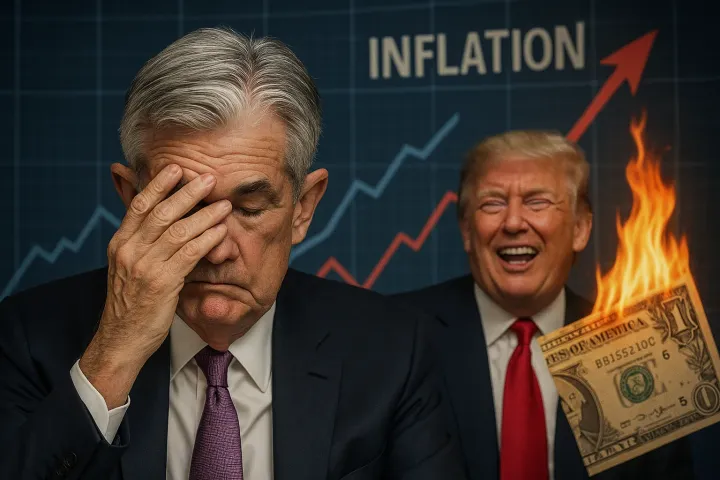The Saudi Oil Squeeze vs. Iran Booming Oil Exports

Saudi extends cuts. The oil market, yes, here we go again. In my opinion, trading the oil market is difficult. The oil market is a complex dynamic system influenced by many factors. One of the main benchmarks for oil prices is ICE Brent, a blend of crude oil from the North Sea.
Yesterday, ICE Brent reached a new high of over $90/bbl, the highest since November 2023.
Let me elaborate on that.
Also, it's essential to read the previous newsletter related to this

ICE Brent
Institutions, banks, etc., often look at "benchmarks" like ICE Brent. A benchmark is like a stand or reference point that provides a way to measure something.
ICE Brent is a specific type of oil blend from the North Sea. It serves as a representative sample of oil prices. It's traded on a specific market called the Intercontinental Exchange (ICE).
Since oil is a global commodity and ICE Brent is a major benchmark, the price of ICE Brent often reflects broader trends in the global oil market.
When people talk about the oil market and mention ICE Brent, they're referring to a useful indicator that sums up many complex factors into a single, more understandable number, the price per barrel of ICE Brent oil.
Factors influencing the oil market
First of all, it's all about supply and demand!
- Supply: How much oil is being produced and available? That could be affected by various things, such as natural disasters, drilling technologies, or decisions by oil-producing countries to increase or decrease production.
- Demand: How much oil is needed? If the economy is booming, industries and consumers use more oil, driving up demand.
- Geopolitics: Political events can heavily influence oil prices. For example, conflicts in oil-rich regions can limit supply, driving up prices.
- Technology: Advances in technology can either increase supply by making it easier to extract oil or decrease demand by offering more efficient alternative energy sources.
- Speculation: Traders in the financial markets buy and sell oil futures based on their predictions of future prices, which can affect the price itself.
Announcement
The move to $90/bbl, the highest level since November 2023, was driven by the announcement of Saudi Arabia and Russia, the two largest oil producers in the world.
They announced they would continue to limit how much oil they produce ("voluntarily supply cuts) until the end of the year.
By announcing they'll continue limiting their oil production, Saudi Arabia and Russia essentially say they will keep the oil supply lower.
The price increases when supply is limited but demand remains the same or increases. This basic economic principle is likely driving the price of ICE Brent to reach new highs.
Saudi Arabia's goodwill gesture
Saudia Arabia is cutting its oil production by more than it was initially supposed to under the OPEC+ deal.
This aims to "support the market recovery," meaning it's aiming to help increase oil prices, which is good for oil producers.

Russia is reducing its oil exports by 300,000 barrels per day, about 10% of its total exports, to help stabilize (or pump) the oil price.
(Wonderful countries)
Some OPEC+ members were producing more oil than they were supposed to under the agreement. In part, Saudi Arabia's extra cut is to make up for its past overproduction.
These production and export cuts were initially supposed to last until September but were extended for another 3 months. This is likely due to ongoing market uncertainty and political tension. The cuts take more time to have the desired effect on oil prices.
Russia's decision to extend its export restrictions aims to limit oil production and supply in the global market. This move was mainly prompted by Western sanctions and price controls following Russia's invasion of Ukraine.
Because these are large players in the global oil market, their actions will likely have a ripple effect, influencing oil prices worldwide.
A, theou a premium newsletter member but still didn't join Discord?
(Also, the article does not end here)
Join Discord to get the full value out of the newsletter. There's no extra cost associated with Discord. Yes, options data, such as dark pools, options gamma, unusual flow, etc., are also included.



Supply cuts were unexpected
When the market expects one thing but the other thing happens, prices usually move dramatically. In this case, most institutions and others thought the supply cuts would either last just one more month or that production would gradually increase.
Instead, the cuts were extended for three more months.
Traders are optimistic and expect prices to go up. So, the unexpected extension leads people to think that oil prices will keep rising, which can itself push prices up due to all the speculation. People now assume a deficit in oil supply to meet the demand, especially in Q4 of 2023. A major supply and demand imbalance.
A rough estimate, I think the global oil demand will exceed the global oil supply by about 1.5MMbbls/d in Q4 2023, which will draw down the inventories and support higher prices. So a rough estimate is that the world will need 1.5 million barrels per day, more than what will be produced in Q4 2023.
Be careful; enter Iran
Despite the bullish sentiment, I am somewhat skeptical and hesitant to fully commit to the idea that oil prices will continue to rise at this speed due to some factors.
Due to ongoing pandemic concerns, people may travel less, and economic activity could be slow, reducing the need for oil, which would put downward pressure on its price.

Iran has been increasing its oil production and plans to continue doing so, despite US sanctions and stalled nuclear talks.
More supply from Iran could offset the supply cuts from OPEC+, which could drag prices down.
Iran increased its oil production to about 3.1 million barrels per day in August 2023 and plans to boost it to around 3.4 million barrels per day by the end of the year.

So, the OPEC+ supply cuts aim to raise oil prices, but increased Iranian production could work against that by adding more oil to the market.
Beyond the seasonal demand impact, the already high exports and production will limit how much more the nation can ship in the longer term, said Russell Hardy, chief executive officer of trader Vitol Group. Output has already reached 3.1 million barrels a day, he said at the APPEC conference by S&P Global Commodity Insights in Singapore on Monday. Iran expects to boost that to 3.4 million a day, close to the pre-sanctions capacity of 3.8 million barrels. - Bloomberg
Forecast
So, I guess there will be a slight excess of oil in Q1 2024. That extra supply should limit extreme price moves to the upside.
Here's a forecast: I think the average price of Brent oil will be around $92 per barrel for Q4 2023.
Looking ahead, I'm not ruling out further extension or partly into the early part of next year.
For now, I think the oil supply will slightly exceed the demand in the first quarter of next year (Q1 2024).
Whether or not we actually go through with these production costs will depend on a variety of factors, such as the oil price towards the end of this year and ongoing concerns that are still present today.



